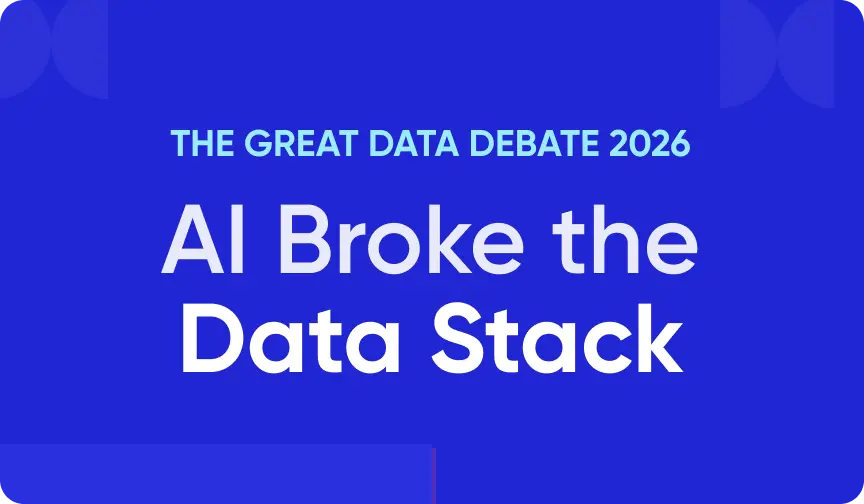How to Connect a Data Discovery Tool With Amazon Redshift?

Share this article
A data discovery tool helps you find the right data to analyze. On the other hand, Amazon Redshift allows you to quickly process and analyze large datasets. Combining a data discovery tool with Amazon Redshift, allows you to gain insights faster, as you spend less time searching and more time analyzing.
Using a data discovery tool with Amazon Redshift helps in analyzing vast data sets to uncover trends and patterns. Amazon Redshift’s capacity to handle large-scale data efficiently makes it a powerful tool for driving strategic business decisions based on comprehensive data analysis.
Let’s uncover how the synergy between data discovery tools and Amazon Redshift empowers businesses to handle large-scale data analysis more effectively.
Modern data problems require modern solutions - Try Atlan, the data catalog of choice for forward-looking data teams! 👉 Book your demo today
Table of contents
Permalink to “Table of contents”- Why should you use a data discovery tool with Amazon Redshift?
- Amazon Redshift overview
- What is data discovery?
- Steps for implementing a data discovery tool with Amazon Redshift
- Considerations for procuring a data discovery tool
- Guidelines for effective implementation
- Data discovery for Amazon Redshift: Related reads
Why should you use a data discovery tool with Amazon Redshift?
Permalink to “Why should you use a data discovery tool with Amazon Redshift?”Here are some benefits of using a data discovery tool with Redshift:
1. Enhanced decision-making
Permalink to “1. Enhanced decision-making”It offers deep insights, aiding informed business decisions.
2. Improved data management
Permalink to “2. Improved data management”Helps in organizing and understanding large data sets effectively.
3. Boosted security and compliance
Permalink to “3. Boosted security and compliance”Identifies sensitive data, enhancing security and meeting regulatory needs.
4. Strategic business planning
Permalink to “4. Strategic business planning”Unveils hidden trends, guiding data-driven business strategies.
Amazon Redshift overview
Permalink to “Amazon Redshift overview”Amazon Redshift is a fully managed, AI-powered cloud data warehouse service that offers massively parallel processing architecture.
It has the following characteristics:
- It’s designed for modernizing data analytics, enabling quick and cost-effective business decision-making.
- Amazon Redshift’s zero-ETL approach allows for the unification of all data types, supporting powerful analytics, near real-time use cases, and AI/ML applications.
- It enables easy and secure data sharing and collaboration within and across organizations and AWS regions, and with third-party data providers while ensuring leading security and fine-grained governance.
What is data discovery?
Permalink to “What is data discovery?”Data discovery is the process of finding and understanding patterns, trends, and insights in data through querying, profiling, and visualization. It is user-driven, enabling analysts to explore complex datasets using advanced tools like machine learning.
It emphasizes the importance of exploring and understanding large volumes of data, thereby enabling organizations to make informed decisions based on the information derived from their data sets.
Steps for implementing a data discovery tool with Amazon Redshift
Permalink to “Steps for implementing a data discovery tool with Amazon Redshift”Evaluating a data discovery tool for Amazon Redshift involves the following strategies. Let’s look at them shortly.
1. Performance compatibility
Permalink to “1. Performance compatibility”Check if the tool efficiently processes large datasets within Redshift’s architecture.
2. Integration ease
Permalink to “2. Integration ease”Ensure seamless integration with Amazon Redshift and other AWS services.
3. Data security
Permalink to “3. Data security”Evaluate the tool’s security features for compatibility with Amazon Redshift’s security protocols.
4. Cost analysis
Permalink to “4. Cost analysis”Compare initial costs with long-term ROI, factoring in efficiency gains and potential data insights.
5. User interface
Permalink to “5. User interface”Prefer tools with user-friendly interfaces for smoother adoption.
Common misses while evaluating a metrics catalog tool for Redshift
Permalink to “Common misses while evaluating a metrics catalog tool for Redshift”- Scalability overlooks: Ensure the tool scales with your data growth.
- Advanced feature overlook: Check for advanced analytics and AI capabilities.
Considerations for procuring a data discovery tool
Permalink to “Considerations for procuring a data discovery tool”When making a business case for procuring a data discovery tool, it’s crucial to consider several factors to ensure that the investment aligns with the organization’s needs and goals.
- Highlight ROI: Demonstrate how the tool maximizes Amazon Redshift’s capabilities.
- Align with business goals: Show how the tool advances overall data strategy.
- Showcase efficiency gains: Emphasize improvements in speed and data handling.
Guidelines for effective implementation
Permalink to “Guidelines for effective implementation”Common pitfalls in implementing a data discovery tool with Amazon Redshift include:
1. Inefficient data management
Permalink to “1. Inefficient data management”Struggling to effectively unify and manage diverse data sets.
2. Cost management issues
Permalink to “2. Cost management issues”Underestimating and not optimizing the cost of running large-scale queries.
3. Performance optimization
Permalink to “3. Performance optimization”Failing to tune the Amazon Redshift environment for optimal performance.
4. Complex integration
Permalink to “4. Complex integration”Difficulties in integrating Amazon Redshift with other tools and AWS services.
5. Data security overlook
Permalink to “5. Data security overlook”Not adequately addressing security and compliance requirements in the data discovery process.
Data discovery for Amazon Redshift: Related reads
Permalink to “Data discovery for Amazon Redshift: Related reads”- Amazon Redshift Documentation
- What Is Data Discovery: Definition, Purpose, Process, Techniques, and Tools
- Data discovery catalog
- Open Data Discovery: An Overview of Features, Architecture, and Resources
- Data Discovery Tools: 9 Popular Tools You Should Consider in 2024
- Personalized Data Discovery for Snowflake Data Assets
- How to Improve Data Discovery with Persona-Driven Strategies
Share this article





















